
Drugs in Ancient Cultures: A History of Drug Use and Effects
The battle against drugs and drug usage rages on today and for good reason. However, with the near constant limelight that the ‘drug war’ receives today, it can seem like the most common drugs have only just been discovered. Although the main production process of these drugs is often carried out by farmers in some far flung corners of the world, the reality is that most modern drugs were discovered many millennia ago.
Archaeological evidence shows that humans were taking opium and ‘magic’ mushrooms as far back as 10,000 years ago. Some scholars even believe that a few notable Greeks, like Pythagoras, couldn’t have come up with their genius theories and philosophies without some form of drug use. Texts from ancient history suggest there may be truth in these claims. This article focuses on the various drugs used in ancient culture, as well as highlighting the importance of modern day drug rehabilitation, from state funded rehab centers to luxury rehab centers.
1. Harmal
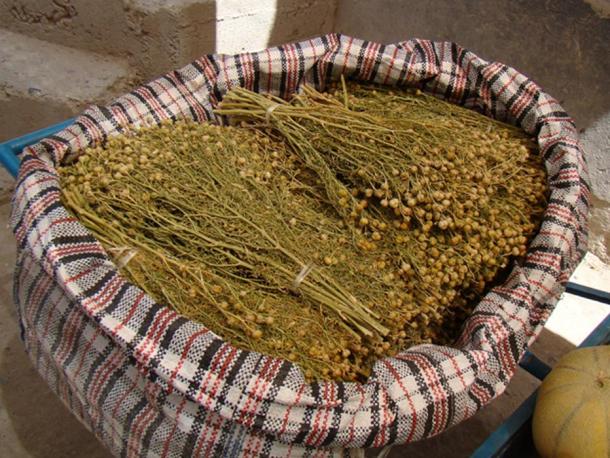
Harmal was commonly used by West Indian, Iranian and Andean cultures. Interestingly, it was recently discovered in the hair of an adult male mummy and a mummified one-year-old baby in Northern Chile. The older male was buried with snuffing trays and pipes which may have been used to consume the drug. The remains are believed to be from 800 to 1200 AD.
Harmal is a flowering plant that can be converted to the chemical Harmine through a distillation process. The chemical works as a strong antidepressant and has the ability to magnify the effects of other anti-depressants. It can also be used in the treatment of inflammation and fever. Harmal seeds are available in most Iranian and Middle Eastern grocery stores.
2. Cannabis
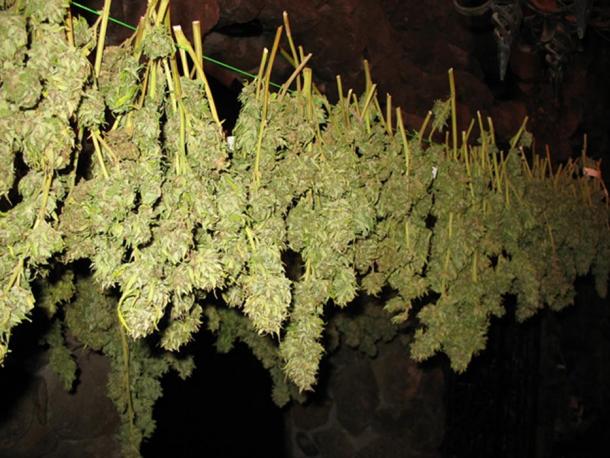
The wider world is certainly no stranger to this drug, with thousands of cannabis legalization debates taking place across the globe. However, it has been in use for thousands of years and is believed to have been used in ancient Central and South Asia. A 2,7000-year-old grave in western china exhibits the most recent evidence of the drug being used as a psychoactive substance in ancient times; around 789 grams, or 1.7 pounds of the substance was found in the shaman’s grave.
- Were the works of Shakespeare inspired by Cannabis? Scientists find traces of drugs on pipes
- Secret Chamber Found at Scythian Burial Mound Reveals Golden Treasure of Drug-Fueled Rituals
- Cannabis: A Journey Through the Ages
Cannabis was cultivated in the past for its hemp fiber but it has also been used as a meditation aid and painkiller by Sikhs for generations. Although cannabis is still illegal in the majority of places, there are instances of medical legalization due to its use as treatment of glaucoma and increasing the body’s appetite.
3. Nutmeg
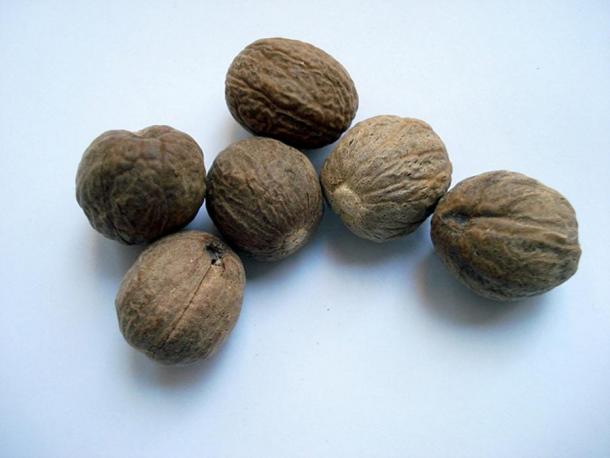
Ancient Indian and Asian cultures were prone to using Nutmeg recreationally. While it is mostly regarded as a cooking ingredient today, nutmeg is useful in the treatment of asthma and heart complaints and also serves as a sedative. Many ancient cultures believed that the spice had special or magical powers.
Regular water mixed with nutmeg has also been used as substitute for decades, and was even used by Malcolm X. Overdose on nutmeg has very strong side effects though, so it’s worth remembering that moderation is key, especially as you can find nutmeg in any local spice store or supermarket.
4. Coca Leaf

Coca leaf was chewed and brewed into tea for consumption by the Mayans due to its powerful stimulating effects. This was long before the idea of distilling the plant into a strong cup of coffee had been conceived. The drug is very potent: a mere 100 grams of coca plant leaves contain the daily recommended intake for vitamins, iron, phosphorous, calcium and iron. Coca leaf can be found in Medellin and other parts of Southern America.
5. Psilocybin
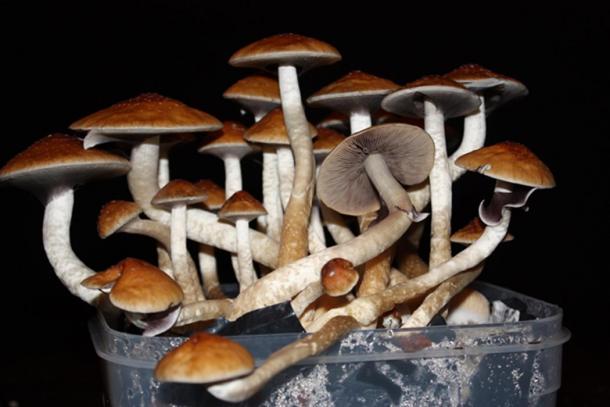
Psilocybin was used by Ancient people in the Saharan Desert as well as throughout Central and South American cultures. Also known as ‘magic mushrooms’, they have been found in North African murals dated anywhere from 9000 to 7000 BC. Eating magic mushrooms is known to cause nausea and hallucinations, which were warmly embraced by ancient users as they believed it offered them access to higher levels of intelligence. It is widely believed by drug history students that the hallucinations caused by magic mushrooms led to some of the most famous religious and cultural evolutions of our entire species.
There are different varieties of mushroom all around the world, but one quick way users obtain them today is to grow it on cattle dung. Some shops in the Netherlands and some parts of Belgium have been known to sell magic mushrooms as well.
6. Opium
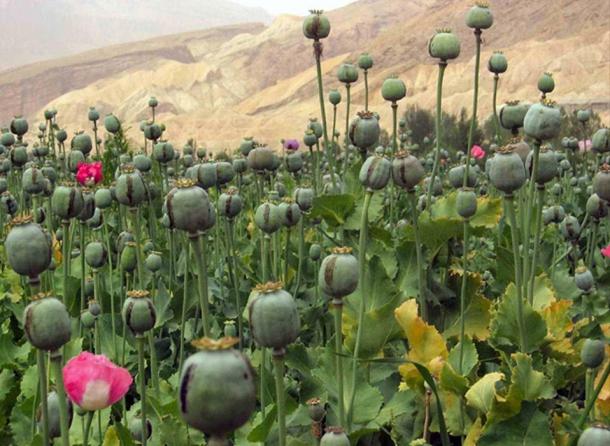
Opium is undoubtedly the most widely used drug in ancient history. The history of opium is long and complex but scholars believe it was first cultivated by Sumerians in 3400 BC. Some of the ancient users of the drug include Romans, Greeks, Indians, Egyptians, Assyrians, as well as the Sumerians. Opium is derived from the latex found in the husk of the poppy flower. This latex contains morphine which is the active ingredient in the drug. Historically, the drug was used to provide pain relief, induce sleep, cure diarrhea and even improve libido.
- Prehistoric people used hallucinogens as part of sacred burial rituals
- Archaeological study explores drug-taking and altered states in prehistory
- Medical marijuana: Modern hunter-gatherers may use cannabis to treat intestinal infections
The drug is processed into derivatives like heroin today, while the flowers can be turned into a potent tea. Afghanistan is the largest producer of opium poppies. Production levels have remained high even with present day anti-drug beliefs and middle-eastern political turmoil.
7. Blue Lotus

Blue lotus was a favorite amongst ancient Egyptians. The drug tends to put users in a more talkative, relaxed and even, in some cases, aroused mood; although modern users point to the blissful sleep it can provide as one of the key reasons for its popularity. The chief method of consumption is brewing the flowers into tea or alcohol, which enhances the potency of the active chemicals in the lotus flower. The drug is known to cause a state of mental weariness as alluded to by Homer in The Odyssey. When Odysseus consumed the plant, he lost his desire to fight the Greek gods and continue his journey back to Ithaca. Blue lotus is perhaps the most common on this list, as it can be found for sale in thousands of different locations online.
These are but a handful of the drugs which have existed for much longer than our current, modern menu. Chances are they will probably still exist thousands of years after we are gone but so, too, will the often debilitating side effects for addicted users.
Top image: Deriv; Fragment of a Tomb Painting with Seated Woman Holding a Blue Lotus, ca. 1539-1425 B.C.E. (CC BY-NC 2.0) and background (CC BY-SA 4.0).
(Images via Liza Knox.)
By Liza Knox
















Comments
"Rumors still circulate about DuPont’s possible role in the prohibition of hemp and cannabis, due to its breakthrough patent of nylon and a process for using wood pulp to manufacture paper in 1937. While both products could facilely be replaced by hemp, which arguably would have severely limited DuPont’s massive profits, those rumors have yet to be either summarily proven — or thoroughly debunked." http://therundownlive.com/the-illuminati-were-amateurs-the-facts-show-th...
No matter the era, the century or the nation .. there never has been a war on drugs, rather a drug war on the competition..
It appears natural plants have been used throughout time, to change people's perceptions to reality. It appears to me that it's just a human state ( animals choose to eat fermented fruit to get drunk).
It is through societies labelling as "bad" that has changed things.
Vikings had rituals, and reign deer love those red and white mushrooms...
Our perceptions of right and wrong and good and bad have changed.
Maybe it's due to how hard it is to get people to work and pay taxes when they're drugged?
Gord, your tentative answer is (most) probably the correct one.
“Could it be that the state of awareness that these substances produce are deemed a threat to the powers that be?
So you think that a person being sedated, utterly stoned, and unable to think clearly much less move in any aggressive way... is perceived as a threat? I doubt it.
Here is a piece of advice that time and time again proves to solve most mysteries of the modern world: Follow the money.
Pages